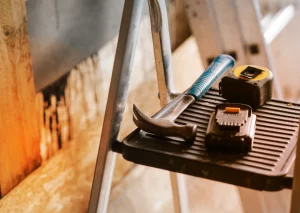Villas are luxury residences that require regular maintenance to ensure their optimal condition and longevity.
While some homeowners may choose reactive maintenance, a more proactive approach offers several advantages.
This article explores the nuances of both approaches, highlighting their key differences and benefits.
What is the difference between reactive maintenance and proactive maintenance?
Fundamentally, proactive maintenance might be described as the opposite of reactive maintenance.
Reactive maintenance operates on a “run-to-failure” philosophy that minimizes maintenance time and investment. In short, reactive maintenance reactive management is all about reacting to problems as they arise.
Proactive maintenance, on the other hand, takes steps to anticipate and resolve problems before they occur. It’s all about anticipating problems and taking steps to prevent them from happening in the first place.
Reactive Maintenance: Addressing Issues After They Arise
Reactive maintenance, as the name implies, involves responding to problems after they have occurred.
This approach is often characterized by a “fix-on-fail” mentality, in which repairs are made at the time of failure.
While reactive maintenance may appear to be a straightforward approach, it can often lead to a number of drawbacks.
Unplanned Downtime
Reactive maintenance can lead to unexpected disruptions and downtime, as repairs are conducted after issues have already surfaced.
This can lead to discomfort, lost productivity, and potential safety issues.
Higher Repair Costs
Responding to problems after they have become more serious often leads to more extensive and costly repairs.
This is because the damage has had time to get worse, making it more complex and costly to repair.
Reduced Asset Lifespan
Reactive maintenance can cause premature wear and tear on assets. This shortens the life of the asset. Because problems are not addressed early, they can progress and cause more damage.
The Examples of Reactive Villa Maintenance
An example is fixing a burst pipe after it has already caused water damage, as opposed to regularly inspecting and maintaining the plumbing system to prevent such incidents.
Proactive Maintenance: An Approach to Asset Care
Proactive, or planned, villa maintenance is a focus on prevention rather than reaction.
It involves identifying and addressing potential problems before they escalate into major issues by implementing regular maintenance schedules and inspections.
Scheduled villa maintenance offers several benefits:
Reduced Downtime and Improved Reliability
Villa maintenance aims to minimize unplanned downtime and enhance the overall reliability of villa systems by proactively addressing potential issues.
This ensures that the villa remains functional and habitable without disruptions.
Lower Repair Costs
With proactive maintenance, problems can be identified and addressed in their early stages. This prevents them from developing into more serious and costly repairs.
Enhanced Asset Lifespan
Regular maintenance and inspections can prevent premature wear and tear, which prolongs the lifespan of villa assets.
This optimization maximizes the return on investment for villa owners.
Improved Safety
Proactive maintenance ensures that the villa’s systems are operating safely and up to code. This minimizes the risk of accidents or hazards.
This creates a safer environment for villa residents and guests.
Preserved Property Value
Keeping the villa in top condition preserves its aesthetic appeal and resale value.
A well-maintained villa is more attractive to potential buyers and commands a higher market price.
The Examples of Proactive Villa Maintenance
Common tasks include HVAC servicing, plumbing inspections, roof checks, electrical system inspections, and regular cleaning of gutters and drainage systems.
The frequency depends on the specific systems and components of the villa, but generally, it involves monthly, quarterly, or annual inspections and servicing.
Choosing the Right Approach: Proactive vs. Reactive Maintenance
Although reactive maintenance may appear to be a cost-effective solution in the short term, it often results in higher overall costs and a reduced lifespan for assets in the long run.
In contrast, proactive maintenance is generally more cost-effective in the long run because it prevents major breakdowns and extends the lifespan of equipment.
For villa owners looking to maximize their investment, optimize villa functionality, and maintain a safe and comfortable living environment, villa maintenance is the clear choice.
Villa owners can enjoy reduced downtime, lower repair costs, extended asset life and increased property value by taking a proactive approach to asset maintenance.








